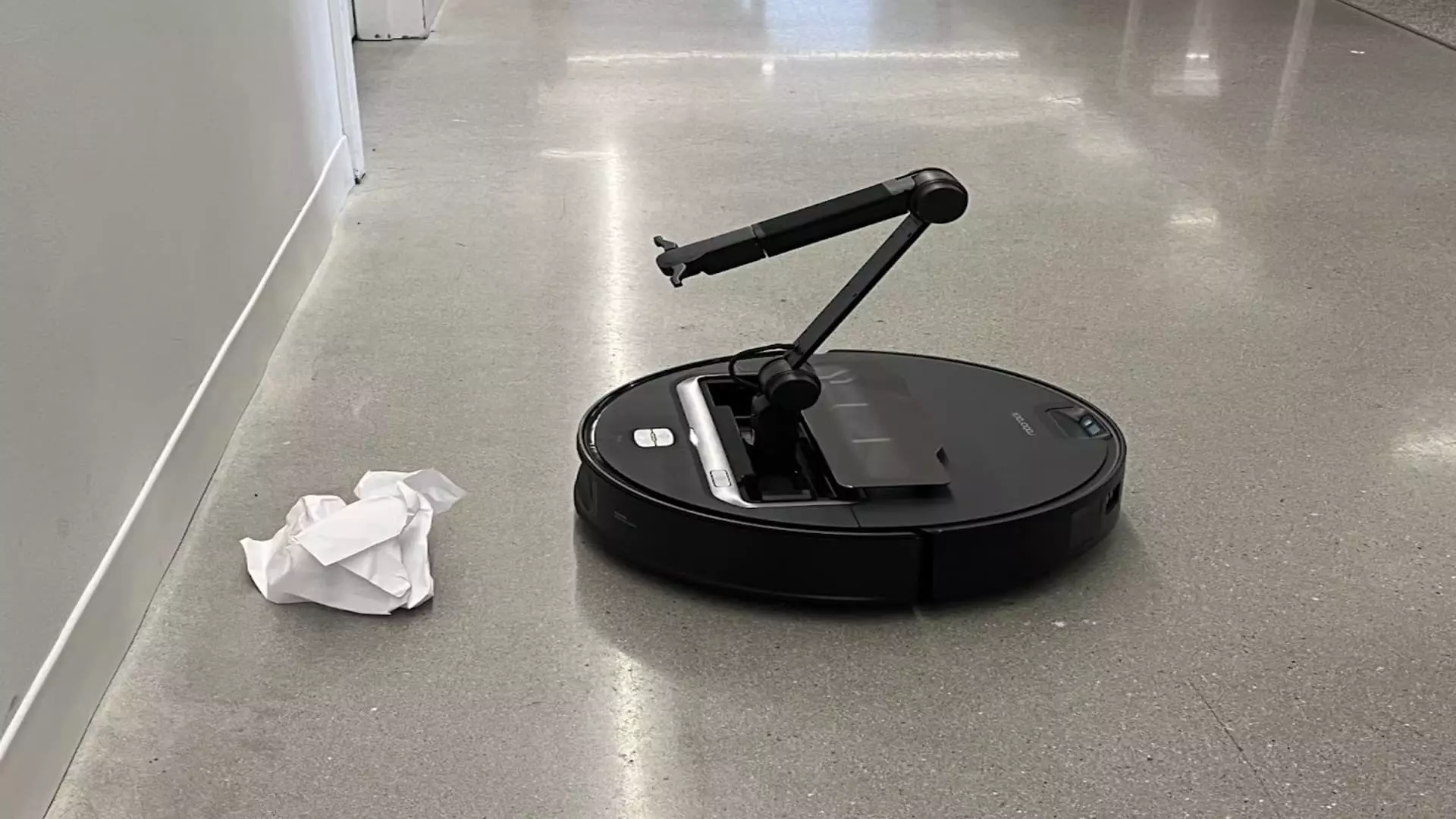On January 5, 2025, Roborock, a prominent player in the robotic vacuum cleaning industry, unveiled its latest innovation: the Saros Z70. This new model includes an impressive feature—a folding arm designed to effortlessly retrieve various objects like socks and small towels. This technological leap isn’t just a cool addition; it’s powered by robust artificial intelligence (AI) that promises to redefine the functionality of robotic vacuums. The company’s president, Quan Gang, expressed his vision of these devices becoming as integral to households as washing machines within the next three years. His aspirations reveal not only the growth potential of the sector but also the transformative impact of integrating advanced AI into everyday appliances.
At the heart of the Saros Z70’s design is its AI-assisted system that allows the robot to identify and interact with obstacles on the floor. According to Roborock, the machine can detect items such as socks and sandals, weighing up to 300 grams, and remove them from its path. This ability could significantly enhance the user experience, resolving a common frustration among current robotic vacuum users—namely, the frequent need to manually clear obstacles before the vacuum can operate effectively.
The upcoming consumer launch, aligned with the Consumer Electronics Show (CES) in Las Vegas, suggests that Roborock is strategically positioning itself at the forefront of home automation technology. By marrying functionality with AI, Roborock seeks to elevate its products beyond traditional cleaning devices into indispensable household essentials.
Since the introduction of the first Roomba in 2002, the robot vacuum market has seen significant evolution, expanding to include features like mopping and automatic charging. Roborock entered the U.S. market in 2018 and saw substantial growth starting in 2023, which points to a competitive landscape where brands continually innovate to capture consumer interest.
Despite the innovations, robotic vacuum penetration remains relatively low. With estimates suggesting that only over 10% of households in developed nations own such devices, Roborock views this as both a challenge and an opportunity. The company’s strategy to harness AI capabilities aims to bridge this gap, potentially leading to broader adoption.
Recent awards from tech publishers like The Verge and Wired reflect Roborock’s status as a premium choice among consumers, but the price points remain high. Models such as the S8 MaxV Ultra and Qrevo S, priced at $1,799.99 and $800 respectively, showcase advanced features but also highlight a major barrier—the cost of entry for consumers. As a result, while innovations are impressive, Roborock faces the uphill task of convincing average consumers to invest in such high-end devices.
Roborock has experienced significant financial growth, as illustrated by its operating revenue increase of 23.2% in the first three quarters of 2024. The rise in stock prices, following the announcement of the Saros Z70, illustrates investor confidence in the company’s direction. However, the competitive nature of the market, with other companies like Ecovacs and iRobot also vying for consumer attention, adds pressure on Roborock to maintain its edge through relentless innovation.
Investment in research and development is another aspect where Roborock is focused. With 9.1% of its revenue allocated to R&D in 2024—a notable increase from previous years—the company is keenly aware of the race for technological supremacy in the AI space. Quan disclosed plans to expand their research teams from 60 to around 300, emphasizing the need for skilled talent in a burgeoning field.
With the Saros Z70, Roborock signifies its commitment to not just maintaining but leading the robotics market. The integration of AI into practical features that enhance usability could redefine consumer expectations and usage patterns of home appliances. As the landscape of home automation continues to evolve, Roborock is positioned to play a crucial role in shaping how consumers interact with technology in their everyday lives.
The upcoming years will likely witness increased competition and innovation in the robotic vacuum space, enhancing user convenience and household efficiency. The introduction of AI-centric features, such as object removal, may pave the way for a new era where robotic vacuums are not seen merely as luxury items but as must-have home essentials. As Roborock capitalizes on this potential, the intersection of AI and daily living will become more pronounced, setting the stage for a future where technology tangibly improves quality of life.

